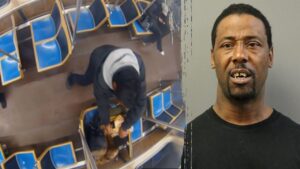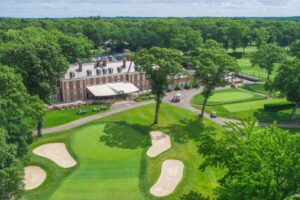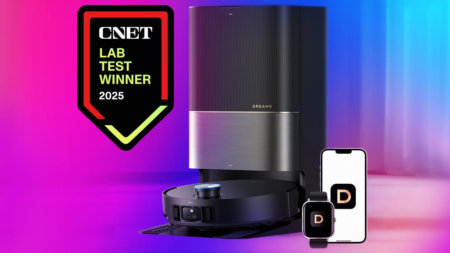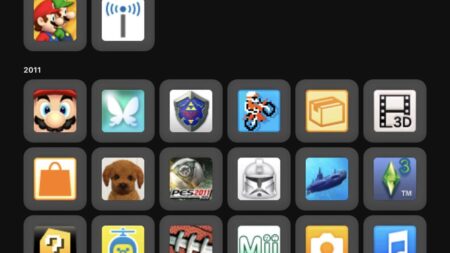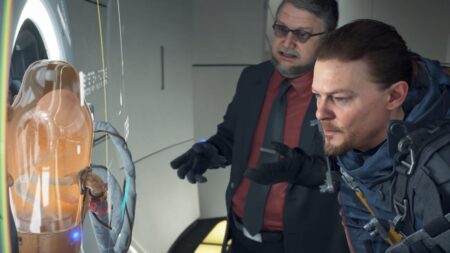At the Formula 1 Las Vegas Grand Prix race, Rich Johnson can hear the distant percussive blats of the F1 cars racing in downtown Las Vegas, but he won’t get to see them all weekend. And he’s fine with that.
Although he’s in town specifically for the event, his main focus is ensuring that, in the event of any emergencies, first responders can communicate and coordinate effectively. I spent time with Johnson, the associate director of network disaster recovery for AT&T, to learn more about an important piece of the race weekend that most people won’t — and shouldn’t have to — think about.
Johnson oversees teams of people and resources strategically positioned around the race track and throughout the city as part of FirstNet, the First Responder Network Authority, “a private/public partnership between AT&T and the US government to create, maintain and service a nationwide public safety drop-in network,” he explains.
Rich Johnson, associate director of network disaster recovery for AT&T, explains FirstNet capabilities.
FirstNet operates on Band 14, a patch of spectrum dedicated for first responders so they don’t have to compete for a signal if something happens, even in a wireless-rich environment like a Formula 1 race.
“If our primary communication methods fail, we have backups that we can go to,” said Brian O’Neal, deputy fire chief with the Clark County Fire Department and emergency manager for Clark County. “Typically that involves moving from radio to cellular. When you look at an event like this, where a 3.8-mile track is running through the middle of the city, capacity within that system becomes a concern.”
Las Vegas got rain during the F1 Las Vegas Grand Prix, but precipitation doesn’t stop first responder vehicles like this one.
That’s where FirstNet comes in, enabling every first responder to communicate with one another on that dedicated spectrum, which is not affected by all of the other competing signals.
As I spoke with O’Neal and Johnson, several bright yellow Clark County fire trucks rolled out behind them to be deployed throughout the area. Johnson pointed out that when the event is going on, traffic is even worse because it’s locked down, so ingress and egress is extremely difficult.
“All these fire trucks will end up being in that footprint before it gets locked out,” said Johnson. “And because we are so embedded with public safety, that’s part of the plan. We have our staff and equipment pre-staged throughout the footprint as well.”
A towable FirstNet trailer can be set up by one person to provide emergency communications.
One piece of equipment Johnson showed me was a small portable trailer that can be set up by a single person. When it’s activated, a process that takes about 30 minutes, it provides about a mile of FirstNet coverage.
It’s often towed by a larger response communications vehicle, which was also parked at the ready and has a deployable 20-foot mast that can provide cellular to first responders over about a mile-and-a-half radius.
A FirstNet emergency communications truck is staged outside the Las Vegas Grand Prix area if needed.
Johnson also took me to the roof of a nearby parking garage, where a portable network tower occupied two parking spaces with a lovely view of downtown Las Vegas and the race track in the distance. It’s up there in “hot standby” mode as a backup to ensure a consistent flow of communication. If needed, it can be activated remotely in a few seconds, using a large dish to communicate with a long-range satellite as the data backhaul.
Many FirstNet assets are in “hot standby” mode and can be activated remotely within seconds.
It’s unlikely the unit will be used during the weekend, but the commitment to multiple redundant systems is why it’s parked in the same spot as it was last year.
Planning for an event like this takes about six months, said Johnson, although much of it came together in four months this year because this is the third Las Vegas Grand Prix where FirstNet has been on hand. Both Johnson and O’Neal reiterated that the technologies and capabilities of these tools are used throughout the year for everyday operations, too. They’re just scaled up dramatically for a planned event like this.
Johnson said AT&T has over 190 assets like these dedicated to FirstNet, with access to over 750 AT&T assets they can use exclusively for public safety if needed.
Watch this: Hands-On with T-Mobile’s T-Satellite Service
Read the full article here

